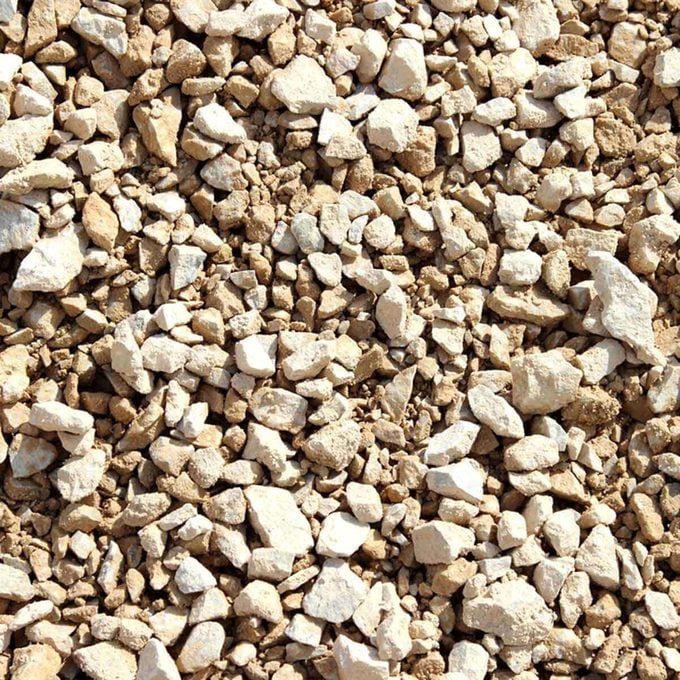What is Paver Base and Should You Use It
Updated: May 19, 2024
When you look out over your patio, what you see (hopefully) are nice solid patio stones or pavers laid in a neat pattern. Learn more about paver base!

When it comes to crafting the perfect patio, walkway, or outdoor space, the foundation you lay is just as important as the finishing touches. Enter the world of paver base — an unsung hero in hardscaping projects. Understanding its function and importance is crucial for any DIY enthusiast aiming for a durable and level hardscape surface.
On This Page
What is Paver Base?
Paver base is a foundational layer used when laying pavers for patios, walkways, and other outdoor hardscapes. It is typically composed of crushed stones, varying in size, and sometimes includes stone dust. This coarse material is vital for creating a solid, stable base that provides adequate drainage and supports the pavers above.
What Does Paver Base Do?
Paver base serves multiple essential functions. First, it ensures a uniform, leveled surface to lay your pavers on. Second, the crushed stone in the base promotes good drainage, preventing water accumulation and potential damage from freeze-thaw cycles. Moreover, the paver base adds stability, reducing the chances of pavers shifting over time due to foot traffic or other external factors.
Is Paver Base the Same as Gravel?
While paver base is often made up of crushed stone, much like gravel, they aren’t exactly the same thing. Paver base is specifically designed for its purpose with a blend of differently sized stone particles to create a more compact, stable surface. Gravel, on the other hand, may have more uniformly sized particles and might not compact as tightly, making it less ideal as a base for pavers.
What are the Different Type of Paver Bases?
In the world of hardscaping, selecting the right paver base can make all the difference in the longevity and quality of the finished project. Here’s an overview of the different types of paver base to help DIY enthusiasts make informed decisions:
- Crushed Stone: One of the most common types of paver base, crushed stone is known for its ability to provide a firm, stable foundation. The jagged edges of crushed stones interlock, making for a compact and sturdy base. Size #57 (about 3/4 to 1 inch in diameter) is commonly used for paver projects.
- Processed Road Base: This is a combination of fine stone dust and gravel. The stone dust fills in the spaces between the gravel, creating a more stable and compact surface for pavers. It’s often used for driveways and walkways due to its excellent load-bearing properties.
- Recycled Concrete Aggregate (RCA): An eco-friendly choice, RCA is made from crushed concrete reclaimed from demolished buildings or infrastructure projects. It functions much like crushed stone in terms of providing a firm foundation but is often more affordable and environmentally friendly.
- Pea Gravel: Consisting of small, rounded stones, pea gravel is sometimes used as a paver base for lighter load areas like walkways or patios. However, because it doesn’t compact as well as crushed stone or processed road base, it’s often topped with a layer of sand before laying pavers.
- Coarse Sand: While sand alone isn’t typically used as the primary base material, a layer of coarse, sharp sand is often applied over another paver base material to aid in leveling and to provide a smooth surface for laying pavers. The grainy texture allows for optimal leveling.
- Geotextile Fabric (Optional): While not a type of paver base per se, geotextile fabric can be laid beneath the main paver base material. This fabric acts as a barrier, preventing the mixing of the base with the underlying soil, thus enhancing stability and reducing the risk of settling over time.
When selecting the right type of paver base for your project, it’s crucial to consider factors like the load-bearing requirements of the area, your budget, and the desired longevity of the finished hardscape. Each base type offers unique benefits, so understanding the needs of your specific project will guide you in making the best choice.
Paver Base vs. Paver Sand?
Both paver base and paver sand are essential components in laying pavers, but they serve different purposes. Paver base, as discussed earlier, provides a sturdy and level foundation. Once the paver base is laid and compacted, a layer of paver sand is added on top. This sand assists in leveling and offers a soft, flexible layer to place and adjust the pavers. After laying the pavers, additional sand is often swept into the gaps between them to lock them in place and prevent shifting.
How Much Does Paver Base Cost?
The cost of paver base can vary based on factors like region, quality, and where you purchase it. Prices typically range from $5 to $8 per 0.5 cubic feet bag. However, for the most accurate and up-to-date pricing, it’s recommended to check with local suppliers or home improvement stores.
How Much Paver Base Do You Need?
The amount of paver base required depends on the size of your project and the depth of the base layer you intend to install. Generally, for pedestrian areas like patios and walkways, a base of 4-6 inches is recommended. To calculate the volume needed, multiply the area of your project (length x width) by the desired depth in inches and then divide by 12 to get the value in cubic feet. Always consider purchasing a little extra to account for any potential miscalculations or adjustments.
In the realm of DIY hardscaping, the quality of your foundation often determines the longevity and appearance of your finished project. The paver base, though hidden beneath layers of sand and pavers, plays an instrumental role in ensuring a stable, well-drained, and level surface. So, as you embark on your next outdoor project, remember to give this foundational layer the attention and care it rightly deserves.




















